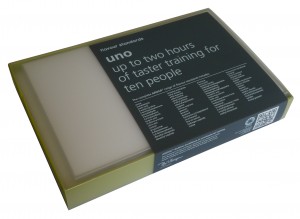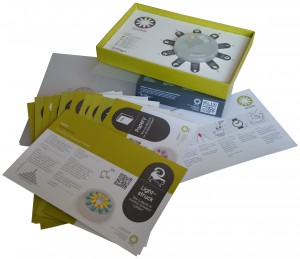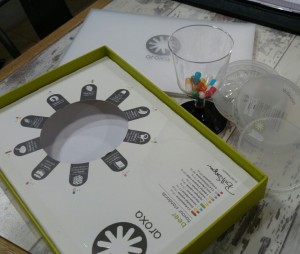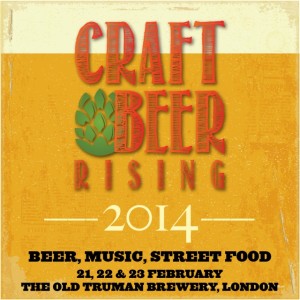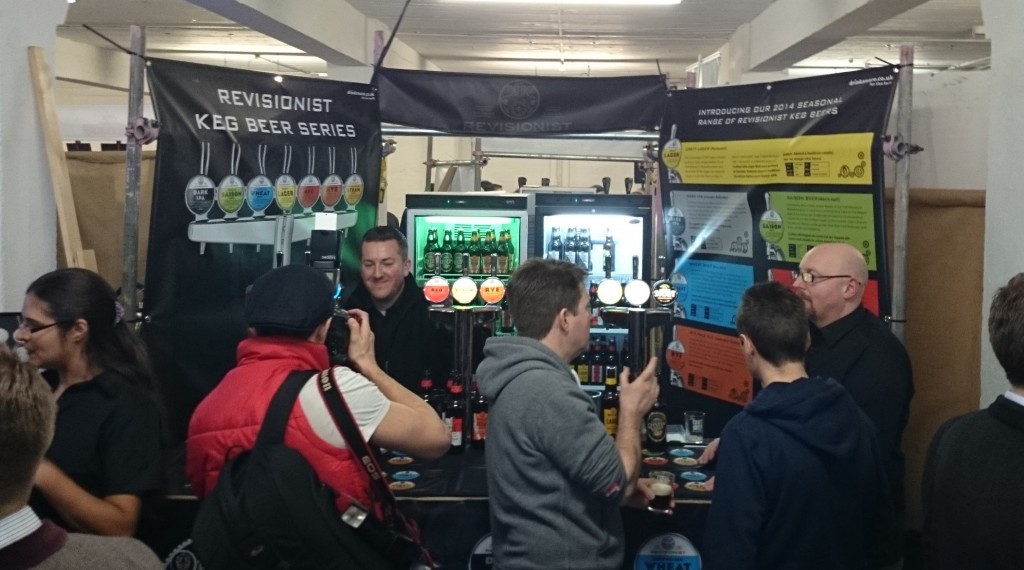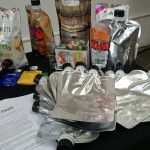I’ve long been meaning to do a detailed write-up about beer packaging, so I have one place to point people to who’re somehow confused and have odd ideas about about “keg”. A poor and quite misunderstood three-letter-word is “keg”, and to be honest “cask” is pretty misunderstood too. I don’t have time to write that post… but I can address one aspect of the the pro-cask FUD that comes up frequently. The use of the word “natural” with respect to beer. To cut a long story short: it is pure propaganda.
What is “natural beer”? I think I can pick off a few obvious items that may make some people think beer has lost its “naturalness”:
- Pasteurised – a process of heating the beer to ensure it is sterile – i.e. the yeast, and any other organisms that may change the beer are killed. Heating will of course change the beer in other ways as well, some volatiles (hop flavours for example) will break down. Pasteurisation is great for stability but perhaps less great for flavour. Stability? Well, perhaps not… live yeast has a known protective quality. It will sit in your beer and “mop up” some excess O2 thus reducing oxidation. (And no seal is perfect, so as well as helping with any O2 left in the beer after filling this helps with the small O2 leakage through capped bottles and probably even cans.)
- Sterile Filtered – a different approach to achieve the same end. Rather than killing yeasts/etc it filters them out of the solution. But such a fine filter will also remove some large molecules that contribute to flavour. As for the beer now being “dead” – this has the same impact as described above. (If one of these two have to be used then I’ll prefer filtration… there is another approach: centrifuge. Thornbridge and BrewDog use this… and their bottled products are pretty fantastic.)
- Contains “chemicals” – contentious. The obvious truth is that all beer is made from chemicals! What I guess we have to read into this in context is the addition of extra substances not normally used for brewing. What are these though? Near all breweries add chemicals to treat their water, malts come with the required enzymes for starch conversion, adjuncts like sugars/wheat/etc are perfectly acceptable for certain styles. So “chemicals” is really a pretty confused area and probably best considered bunkum. Some breweries may use added enzymes to speed up mash/fermentation processes I believe. I know a couple of good breweries adding an extra enzyme to de-glutenise beers without altering their flavour (a great thing for coeliacs!) I think that, like the word “natural”, the word “chemicals” is an all-too-easy-to-reach-for emotive word thrown around blindly in the whole cask/keg debate. (Were sulphites perhaps once used to stabilise beer?) (Where do finings in cask ale fit in here – isinglass and the various adjuncts used alongside it?)
- “Extraneous CO2″ – what’s this then? In CAMRA terms it is use, in any way, of CO2 not created by the action of yeast in the beer. This is also a contentious issue. As there is argument even within CAMRA about the appropriateness of CO2 in the cellar. The big question is around aspirators (aka “cask breathers”) which let just enough CO2 into cask to protect the beer from air contact. And air, really, is the worst thing for beer. No good brewer wants you to be drinking oxidised, stale, beer. I go further and wonder what is so bad about CO2 full-stop. But I guess we hit a personal preference issue regarding fizziness here and I’ll leave it at that.
I think those four items are key to what is behind ideas about “unnatural” beer. The first two are ones I personally think are not really in the interests of good beer… and in fact in my book use of either of them is a line crossed. From what I’d consider a “craft” product to one that quite simply isn’t. Does it make beer “unnatural” … sure, I’ll buy into that a bit. It certainly makes it less than it was and, sure, one could say it makes the beer “dead”.
The whole chemicals thing is just puzzling to me. I’d like to know what these evil chemicals are… but I’ve yet to come across them in the brewing world. And as I said – without chemicals you cannot have beer. (Nor life, nor anything really…)
Now, CO2… the point of this post is to show that your ideas of “natural beer” wade into a big grey area in the world of modern brewing. We do have another point often brought up about what makes “cask ale” natural… that is cask conditioning. “Naturally conditioned beer”… i.e. carbonated by the action of yeast in the beer, not force-carbonated by addition of external CO2. So a natural beer is one that is conditioned in the container it is served from and that involves none of the items in the above list (assuming by “chemicals” we’re talking some odd crazy substances used to somehow adulterate the brewing process).
I bring to your attention the humble KeyKeg. An interesting little keg-type device in which beer is contained within a bladder from which it is extracted using pressure (air will do, but often CO2 is used). The important thing to know about KeyKegs is that many breweries who use them put exactly the same beer into them as they put into casks. Live, good, natural, beer. It conditions in the container it is served from. It does not come into contact with extraneous CO2. The only difference between this beer from keg versus cask is that the keg version will probably be served at a cooler temperature and with more (natural) CO2 remaining in solution.
This beer, from KeyKeg, is a fully “natural” product by any wild definition I can think of.
Moving on from KeyKegs… breweries filling conventional kegs usually do so from a conditioning tank where the beer has been “naturally” carbonated. Again. Live, good, natural, beer. Some even let the beer condition in these kegs (Moor, for example). The only point where the “naturalness” may come into question is when CO2 top-pressure is used to expel beer from keg. And frankly… that’s just a bit of an odd viewpoint to have, in my purely personal opinion. CO2 is CO2. The “extraneous CO2″ does not necessarily add “fizz” to the beer – if used appropriately it just maintains the CO2 level the beer is designed to have. That carbonation level has been chosen by by the brewer – it is as the brewer intends it to be. They’ve, naturally, brewed a beer to be served fizzier. You may not like that… but it is still live, natural, beer.
Next step is to swing across to the grey area of “cask conditioning”. Those “conditioning tanks” I mentioned before are used by many breweries to pre-condition beer prior to filling both cask and keg. So again – in all of the above keg scenarios identical beer is being put into cask. The difference is that the keg version has its natural CO2 level preserved by using CO2 top-pressure, and the cask has its CO2 level reduced via venting.
So sure – there are differences… but unless letting “naturally” created CO2 escape from beer to make it flatter is an essential part of being “natural” (really? really!?) then I think you can drop the silly cask-is-natural keg-is-unnatural approach.
(And I’m really really not saying you have to like cooler fizzier beer… I’m just staying stop claiming it isn’t “natural”. This is needlessly emotive FUD that does nothing for good beer except add confusion. If you want to play at politics (aka lying) then go join a political party… what the beer world needs is facts, not bullshit.)
Chemicals, sub-note: is there a finings Elephant in the room anyone? There’s the (emotive) “fish guts” isinglass finings, and alongside these many breweries use various finings adjuncts like silica-gel. There is an argument that these “drop out” of the beer and you don’t drink them. But there’s always going to be some trace of these “chemicals” left in suspension. Justin of Moor Beer also likes to use the word “natural” – in his case to refer to beer that has not been mucked with by adding finings (regardless of what container type the beer happens to be in). I have somewhat more respect for this usage of “natural”, but do prefer simply “unfined”… isinglass is, after-all, simply made from fish and fish are pretty natural.
[I’ve put up an additional post regarding some other iffy statements in the CAMRA article.]
 I’ve refrained from saying much about this in case I bailed and left the project stillborn. Albeit I’ve not been particularly hush-hush… Anyway… I have beer in a cold-store now, and more beer on the way, quite a bit of beer all up… so this is most certainly going ahead.
I’ve refrained from saying much about this in case I bailed and left the project stillborn. Albeit I’ve not been particularly hush-hush… Anyway… I have beer in a cold-store now, and more beer on the way, quite a bit of beer all up… so this is most certainly going ahead.



